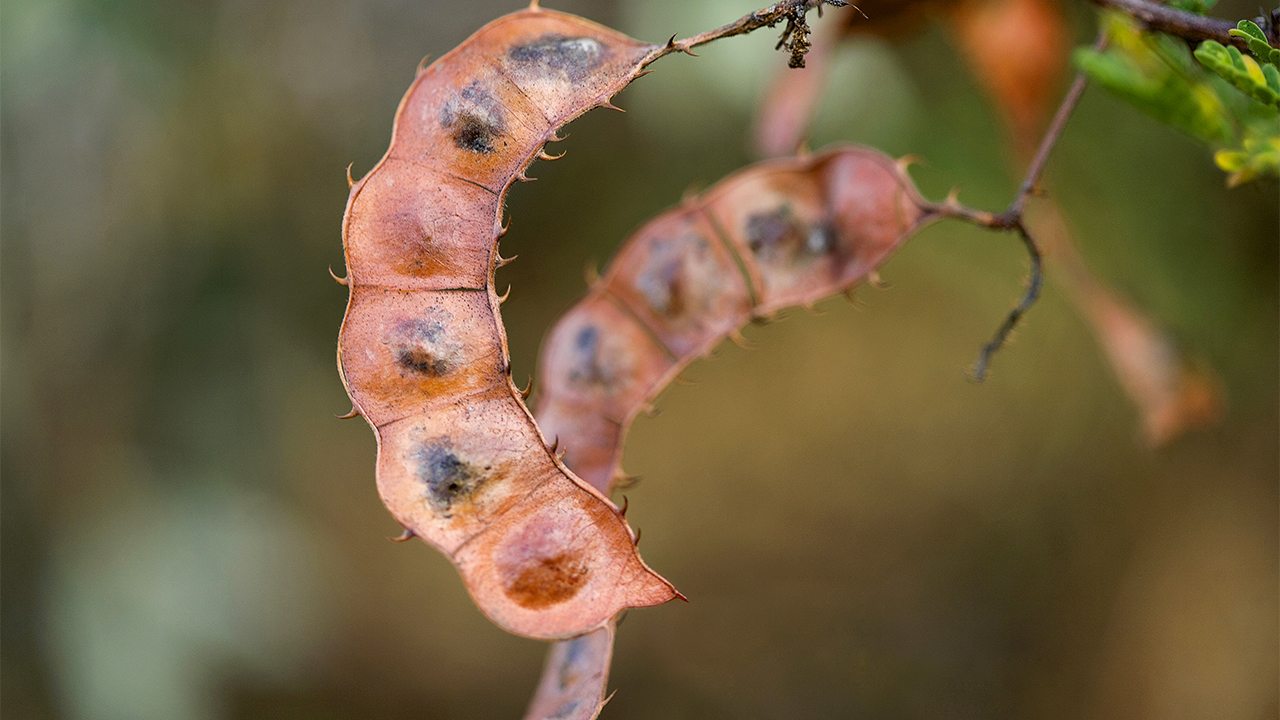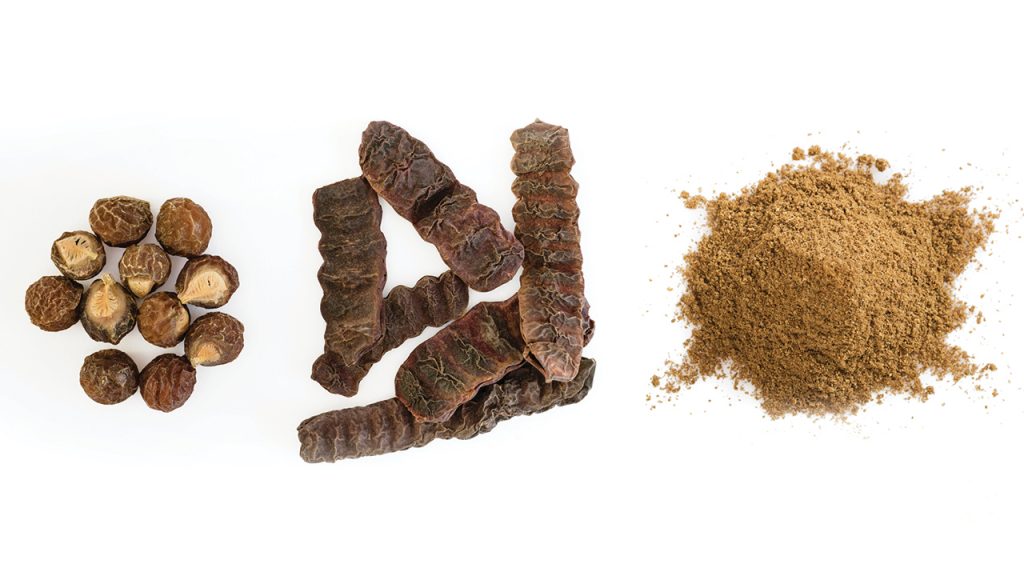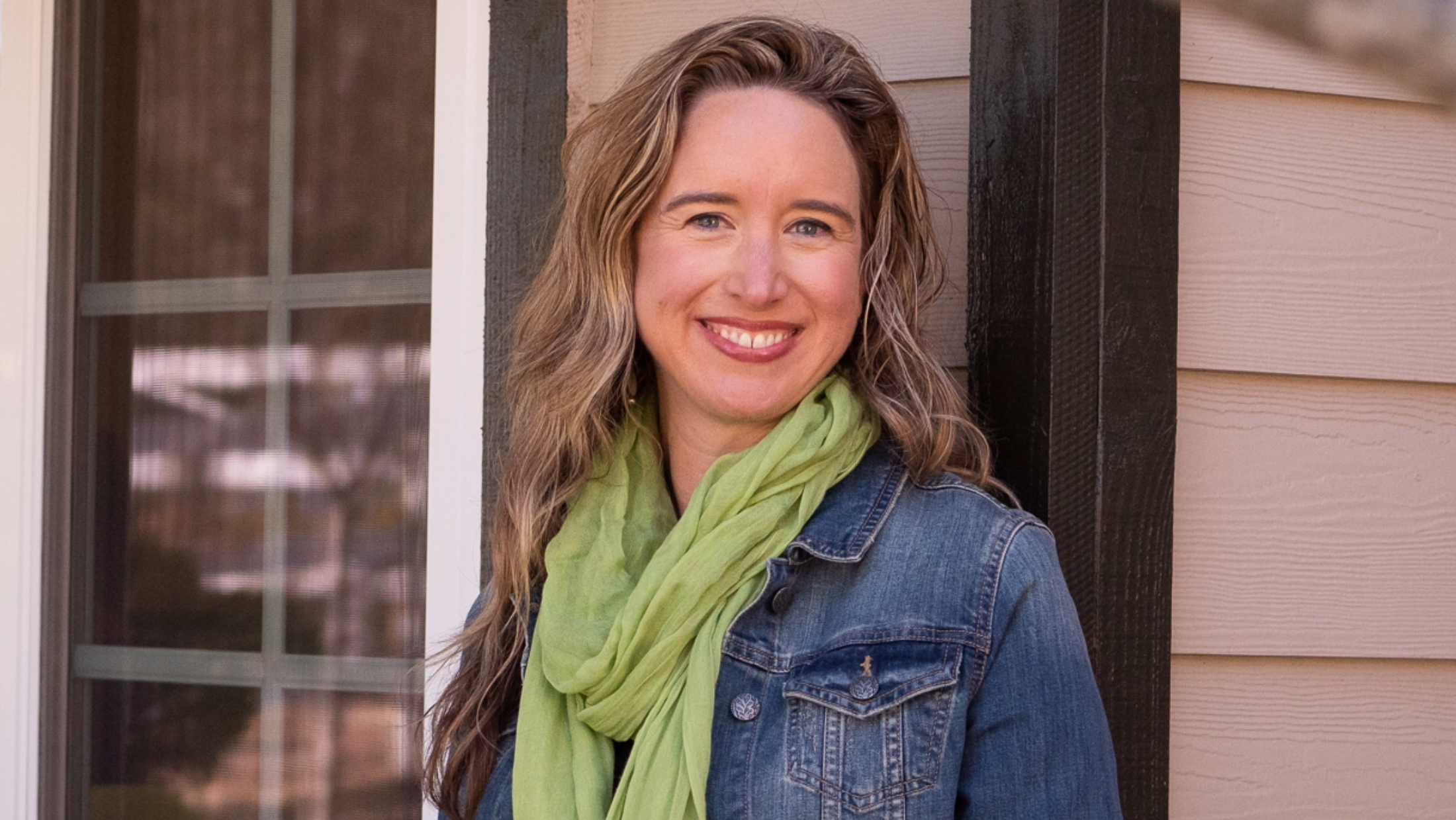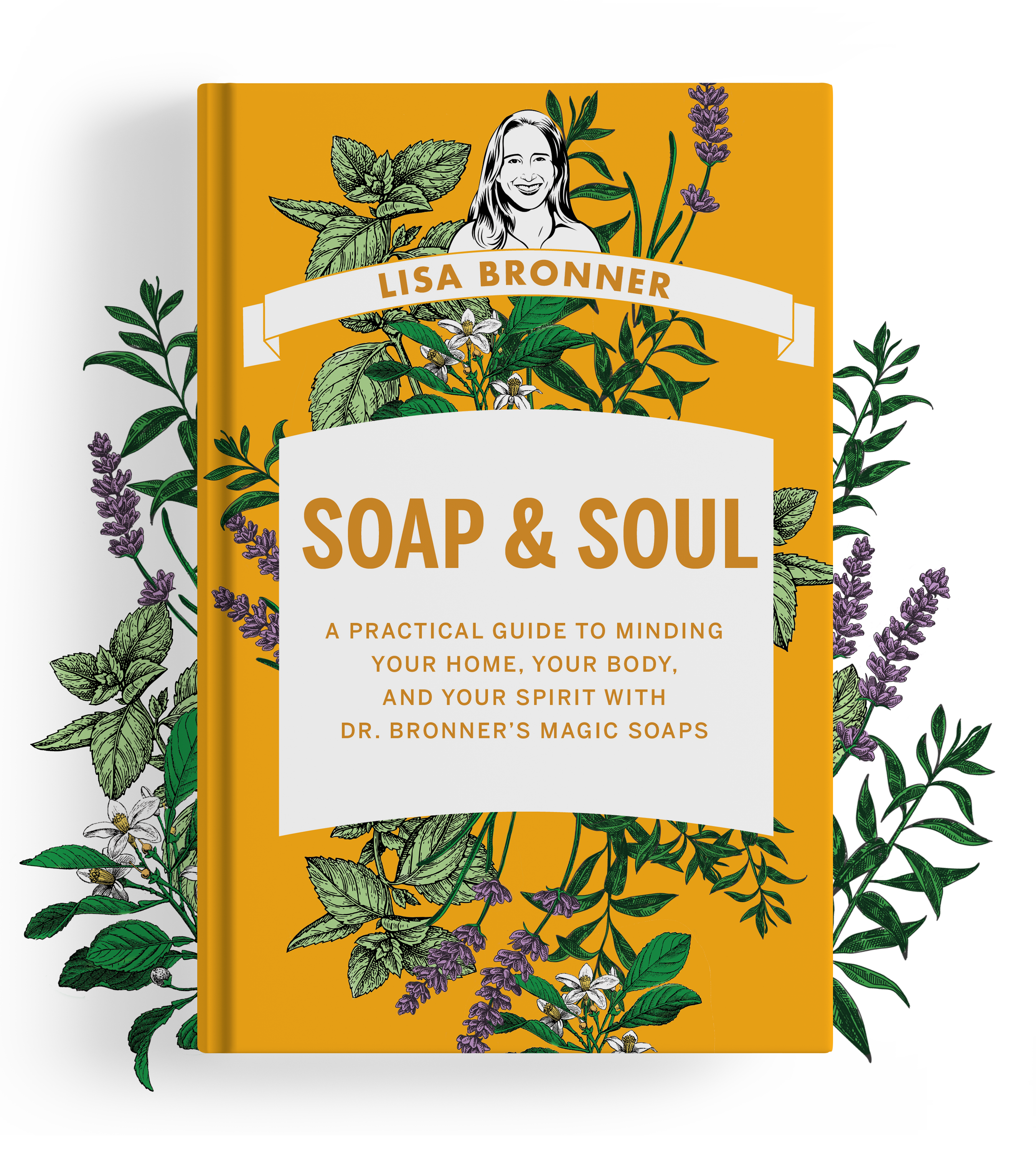
Shika-what?! Did she say what I think she said? Is that a word she should be saying??? Raised eyebrows. Shocked glances.
No need to worry. Shikakai is an age-old ingredient for personal care from India. Let’s say it right, though. It has the same rhythm and vowel sounds as “piece of pie.” Try saying those two in order: piece of pie, shikakai, piece of pie, shikakai. SHEE-kuh-kai
At your next gathering, let loose with your confident and correct pronunciation of Shikakai and you’ll impress all your crunchy friends. Everyone needs a party trick.
What is shikakai?
Shikakai comes from the Acacia concinna, a shrub-like tree that grows in the tropical rainforests of southern Asia. As part of the legume family, it grows long ridged fruit that look like dark brown pea pods. When dry, these pods are ground into a fine powder similar in color and texture to ground cinnamon. This is what we call Shikakai, and it is amazingly good at cleansing and nourishing skin and hair[i].
The word itself literally translates to “hair-fruit” or “fruit for hair.” While not abundant in Western hair and skincare products, Shikakai powder has been used in traditional Indian hair and body care products for millennia.
This is part of what gives Dr. Bronner’s Organic Sugar Soap, Organic Shaving Soap, and Organic Citrus Hair Rinse its rich, dark brown color, and what makes each of these extra nourishing for hair and dry or sensitive skin.
Natural saponins
Shikakai contains naturally occurring saponins, which is pretty much nature’s own soap. They foam like soap and emulsify (bind oils to water) like soap and are surfactants (cut the surface tension of water) like soap. Shikakai is not only plant with natural saponins. Often called “soap plants,” these botanicals have some part – be it seeds, leaves, bulbs or roots – with mild cleansing properties.
For more on how soaps and detergents do this, see my blog post, “Sal Suds or Castile – Which One Should You Use.”
Take quinoa, for example. The quinoa seed contains natural saponins in its outer layer. You may recall that the first step to cooking it is to rinse it. As you rinse, you’ll notice a foaminess, which is those saponins in action If you skip this step, your dish will have the slightly bitter, soapy taste of natural saponins.
Shikakai and lower pH
Shikakai does something that humans haven’t yet figured out how to replicate: give true soap, like Dr. Bronner’s Castile soap, a near-neutral pH. Soap is always alkaline (the Castile sits at a mild 9.3 ± 0.3) and attempting to neutralize the pH down to 7 will break down the soap molecule. However, Shikakai saponins have a naturally low pH between 4.5 and 5.5. When added to soap, they magically lower the the overall pH of the soap down to a super mild 8.5 ± .5 without destroying the soap molecule. It’s actually only the magic of chemistry at work. The saponins in Shikakai are anionic surfactants and soap is an ionic surfactant. That’s the why, but I haven’t yet wrapped my head around the how.
There’s a lot more to the discussion of pH and its role in skincare in my post Skin Health, pH, and Dr. Bronner’s Soap.
The mildness of the Shikakai leaves the skin’s natural oils in place, especially compared to a harsh detergent cleanser (think “shower gel” or “body wash”) which are so intent on grabbing oils that they strip the skin of its needed natural oils. If you have sensitive, easily irritated skin, this lower pH soap may help.
In nature, saponins are part of the plant’s defense system. The saponin’s bitter taste – that we so thoughtlessly rinsed off the quinoa a moment ago – deters would-be predators, such as insects and animals, from snacking on them. Against bacteria and fungi, saponins create an even tougher line of defense and can be toxic. This creates natural immune system of sorts for the plant, defending it against microscopic invaders. Homeopathic medicines rely on these natural antimicrobial and antifungal properties[ii] for aiding in minor wound healing and soothing irritated skin.
There’s some chatter that Shikakai reduces the fine lines and the signs of aging. Although I couldn’t find hard research on this, Shikakai definitely softens and moisturizes skin, which always gives our skin a more youthful appearance. It also is naturally high in vitamins A, D, E and K – all of which help promote and maintain healthy skin – and Vitamin C, a naturally occurring antioxidant that brightens skin.
In Dr. Bronner’s Products
Organic Sugar Soap
You’re wondering, if I’m giving all the love to Shikakai, why is the soap is called Organic Sugar Soap? When we first introduced this soap, it was called Organic Shikakai Soap, but the word “Shikakai” was getting funny looks. No one could say it, so we renamed it “Organic Sugar Soap.” But the sugar in our Organic Sugar Soaps has earned its spot on the marquee, too. Sugar is one of the oldest and most widely used humectants in skin care, and with good reason – it does an excellent job bonding with water molecules to increase moisture content in the skin. It makes a great partnership with Shikakai.
Organic Shaving Soap
In the Organic Shaving Soap, the more concentrated Shikakai powder and sugar act as thickeners, which lather up to a creamy foam. It also softens hair for a close shave and nourishes and sooths just-shaved skin. In fact, the Shaving Soap is so nourishing that in the winter, when my skin and hair are particularly dry, I wash head to toe with the Shaving Soap. Usually the Lemongrass-Lime.
Citrus Organic Hair Rinse
In our Citrus Organic Hair Rinse, the Shikakai powder gently removes any residues and softens and conditions hair. Its naturally low pH works with the citrus in the rinse to help to balance out the soap’s alkalinity and smooth hair follicles.
For more on washing hair with soap, see “From Soap to Shampoo – My Story.”
Brown, Brown, Brown
I know what you’re thinking, “But Lisa, it’s so brown!” Don’t let that color deter you. Lots of great things are brown: chocolate (like our own Magic All-One Chocolate), coffee, teddy bears, compost… Dr. Bronner’s never uses any dyes to disguise the natural colors of its ingredients. In fact, if you ever see a product elsewhere that supposedly contains Shikakai and it is not dark brown, something is not what it seems. Either they’ve used dyes or bleaching agents, or it doesn’t contain more than a speck of this fine powder.
So, at your next dinner party, after you’ve wowed the crowd with your perfect pronunciation of Shikakai, you can converse eruditely on the perks of the powder. Everyone will be riveted. Or maybe that just works at the parties I attend.
Further reading
- Dr. Bronner’s Winter Skin Remedies
- Dr. Bronner’s Pure-Castile vs. Sugar Soaps
- Shaving with Dr. Bronner’s
- 12 Personal Care Ingredients to Avoid









[…] Benefits of Shikakai for Hair and Body […]
Very informative; thanks for sharing these benefits of Shikakai. I learned a lot about Shikakai’s benefits for haircare from another blog on iahas.com, and that was also very well researched. I will also add your blog to my list.
Keep posting great stuff.
Thanks, JesseA! I’m so glad this is helpful!
Hi there- Is it safe to use the sugar soap to wash fruits (e.g. watermelon) like the Castile soap?
Thanks,
Anna
Hi Anna- The Sugar Soap would be safe and effective to use. On a softer fruit, like a peach, the Shikakai powder may cling to the surface. It wouldn’t be a huge problem, but could leave some brown specks. I haven’t done this, but if it is what’s next to your sink, go for it.
Can I add Shikakai to my castile soap and still cleanse my hair with it??
Hi Arthur- Yes, you sure can.
I love using diluted Castile soap for my hair! Gets it super clear and sudsy without using a lot of harmful ingredients like normal shampoos. I use the citrus rinse and would love for ya’ll to make a bigger bottle of it; it runs out so quick!! Also, can I add some Shikakai powder to my diluted liquid castile soap shampoo? I know it’s in the citrus rinse, but could I add some into the castile soap as well?
Hi Kate- Yes, you certainly can add Shikakai powder to the Castile soap.
Are the soaps and rinses good on dyed hair?
Hi Barbara- Unfortunately, no. The alkalinity of the soap opens up the hair follicles, where the color resides. The color will drain out and fade quickly. Colored hair needs acidic products only. (Soap, by nature, cannot be acidic. Only detergents (shampoo) can be.) The Environmental Working Group (ewg.org) is a great resource for finding better products.
Can I mix coconut milk with your Castile soap for my hair?
Hi Marisa- Adding coconut milk will reduce the cleaning ability of the soap because some of the soap molecules will chase the oil molecules in the milk. However, a very small amount can be added. I cover this interaction in this blog post, https://www.lisabronner.com/what-can-you-mix-with-castile-soap/. If you’re wanting a bit more moisture for your hair, try the Organic Sugar Soap or Organic Shaving Soap. Both contain contain sugar, white grape juice and Shikakai powder, all of which bring moisture into skin and hair.
Do you have any of your Sugar Scrubs for the face that I can sample?
Hi Sharon- We don’t have any samples of our Organic Sugar Soaps. The soaps are not a gritty scrub. Instead, the sugar is dissolved as a natural humectant, making it great for skin needing extra moisture.
It would definitely work at a party where I am in attendance ? I very much enjoyed the read, thanks Lisa!
We must attend the same sort of parties!
So interesting! No wonder I’ve been enjoying my latest Dr. Bronner’s discovery- washing my face with the tea tree sugar soap. 🙂 Thanks!
Excellent!
Can the sugar soap be used on color treated (darker – not highlights) safely? I know I can’t use the Castile soap for this. Hoping this soap is different?
Hi Lori- Unfortunately, the pH of the Organic Sugar Soaps is also alkaline which makes them not recommended for colored hair. Any true soap is going to be alkaline. I recommend checking out the EWG Cosmetics Safety Database which is a great site to find info on any personal care products. You can look up shampoo for colored hair there and see their ratings.
SUCH an informative and entertaining piece. I always assumed that shikakai was a mushroom! I just love your family’s products!
Thank you, Shannon! I’m so glad you enjoyed it. And it totally sounds like a mushroom. Shitake vs Shikakai???